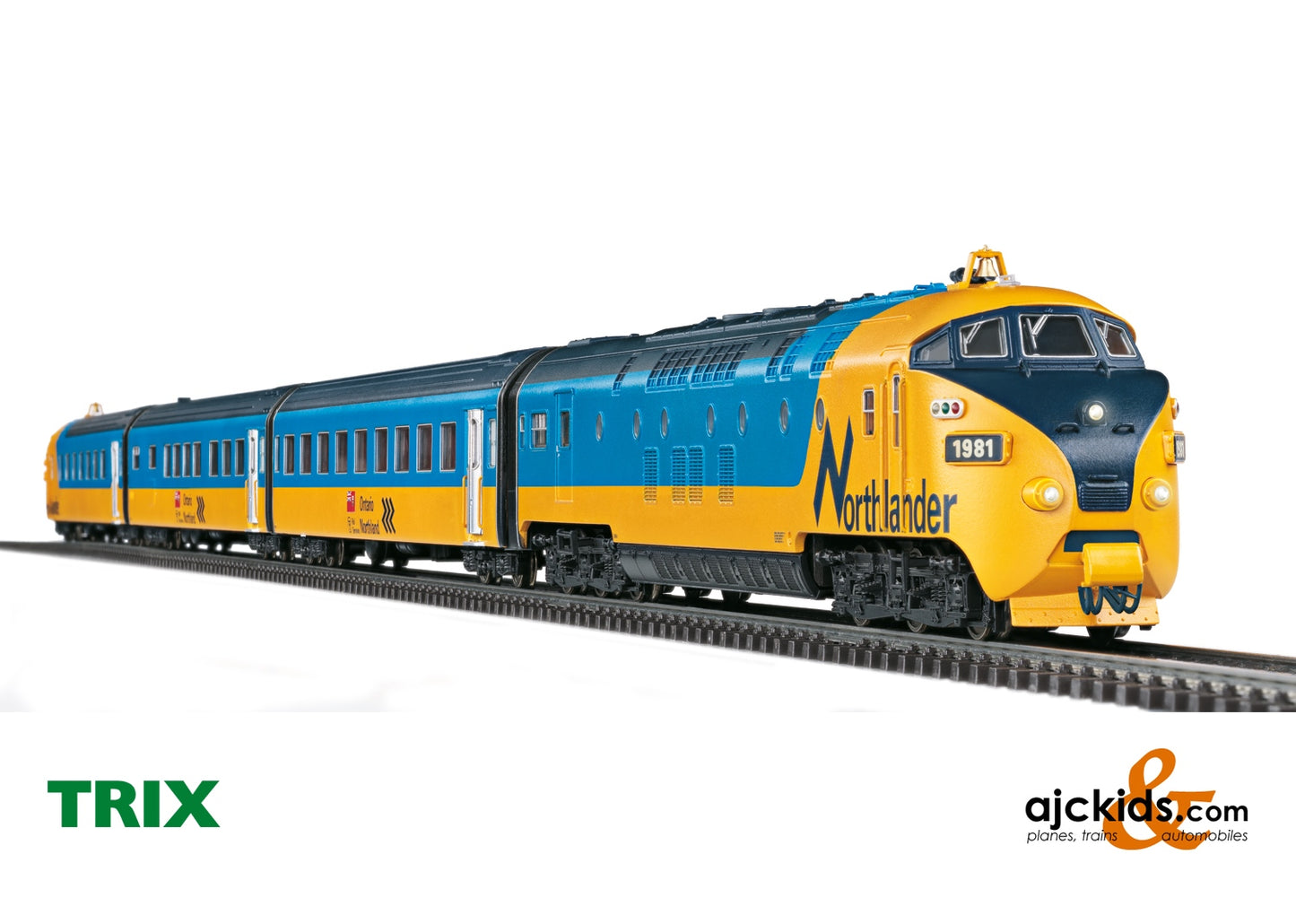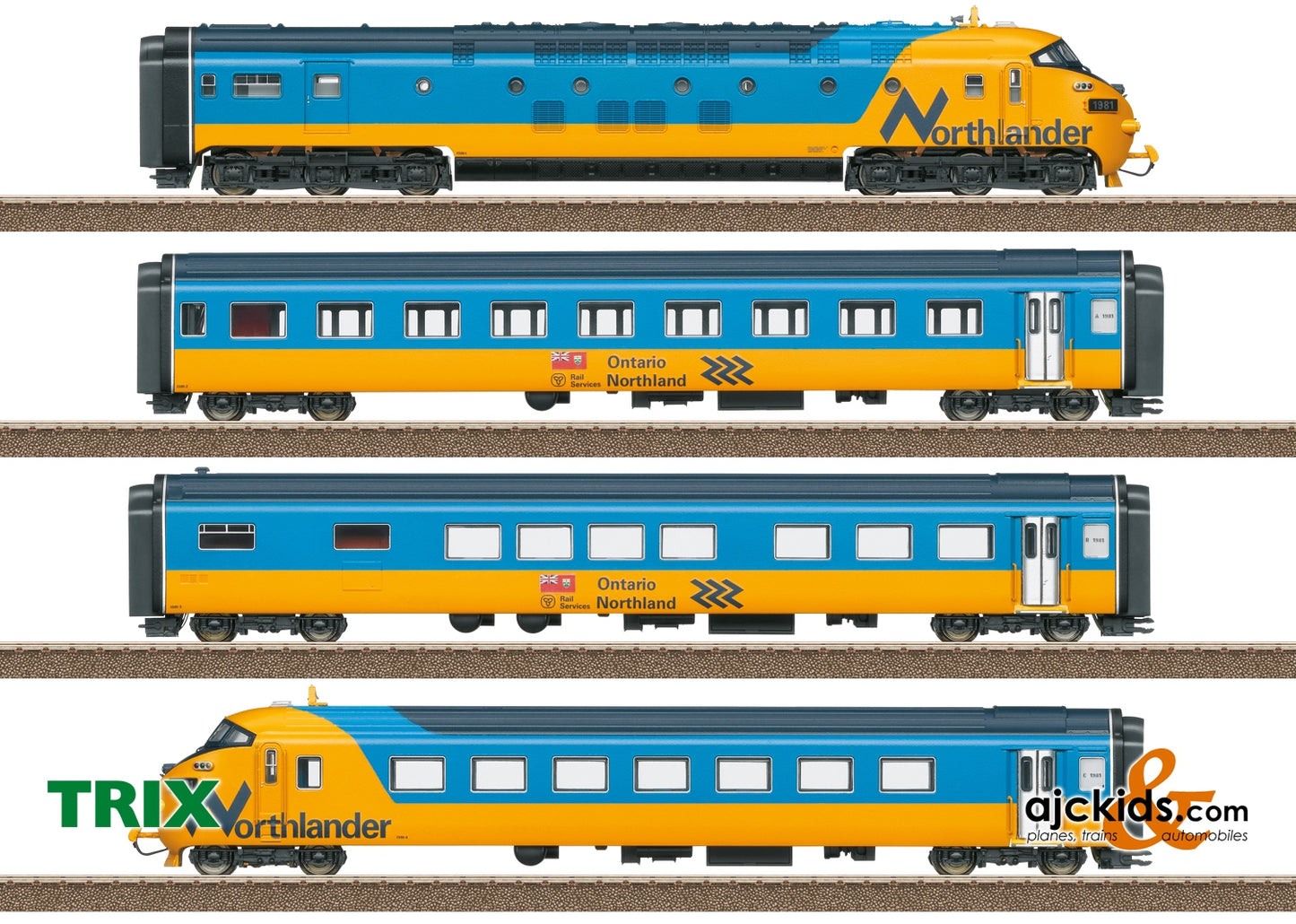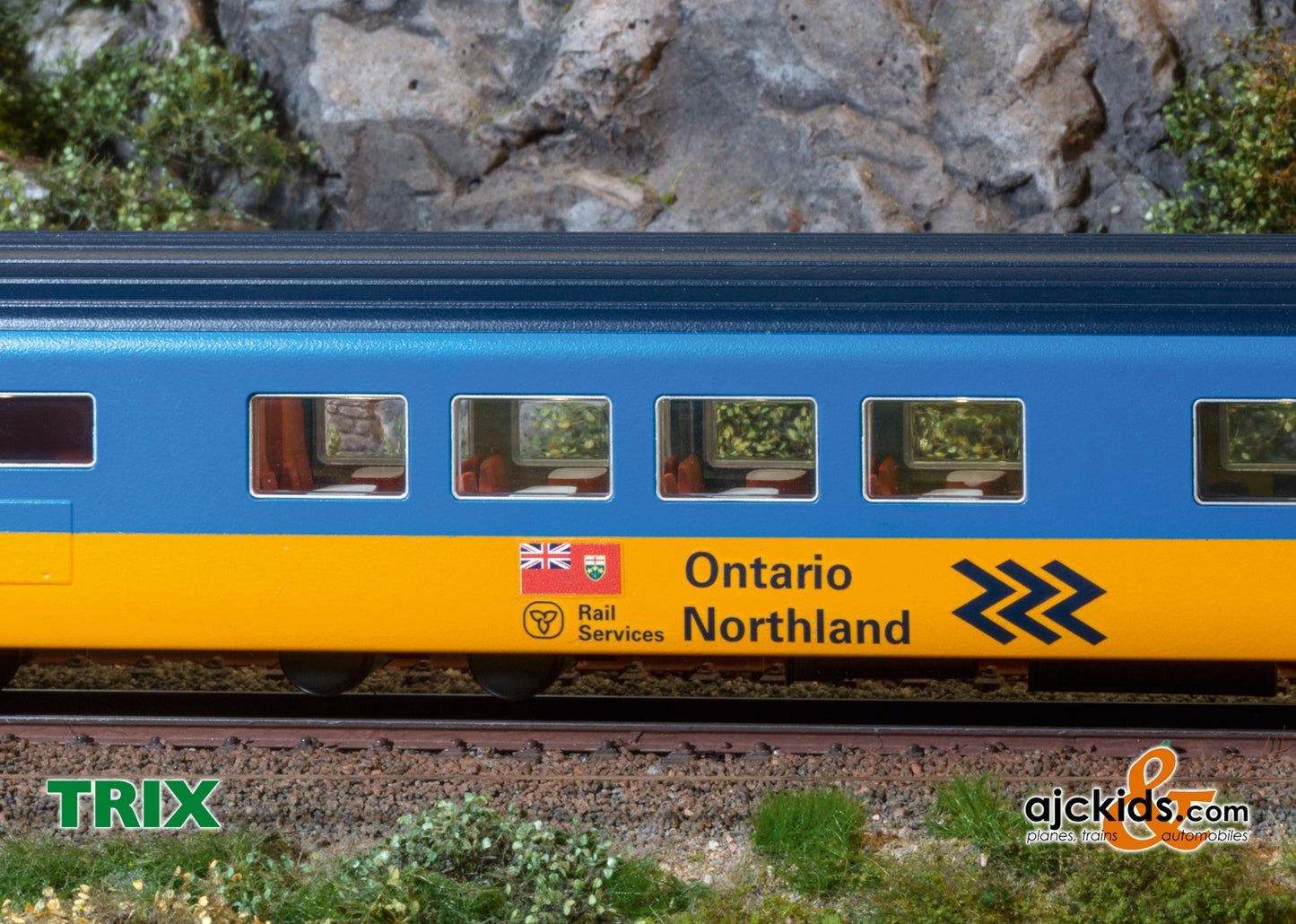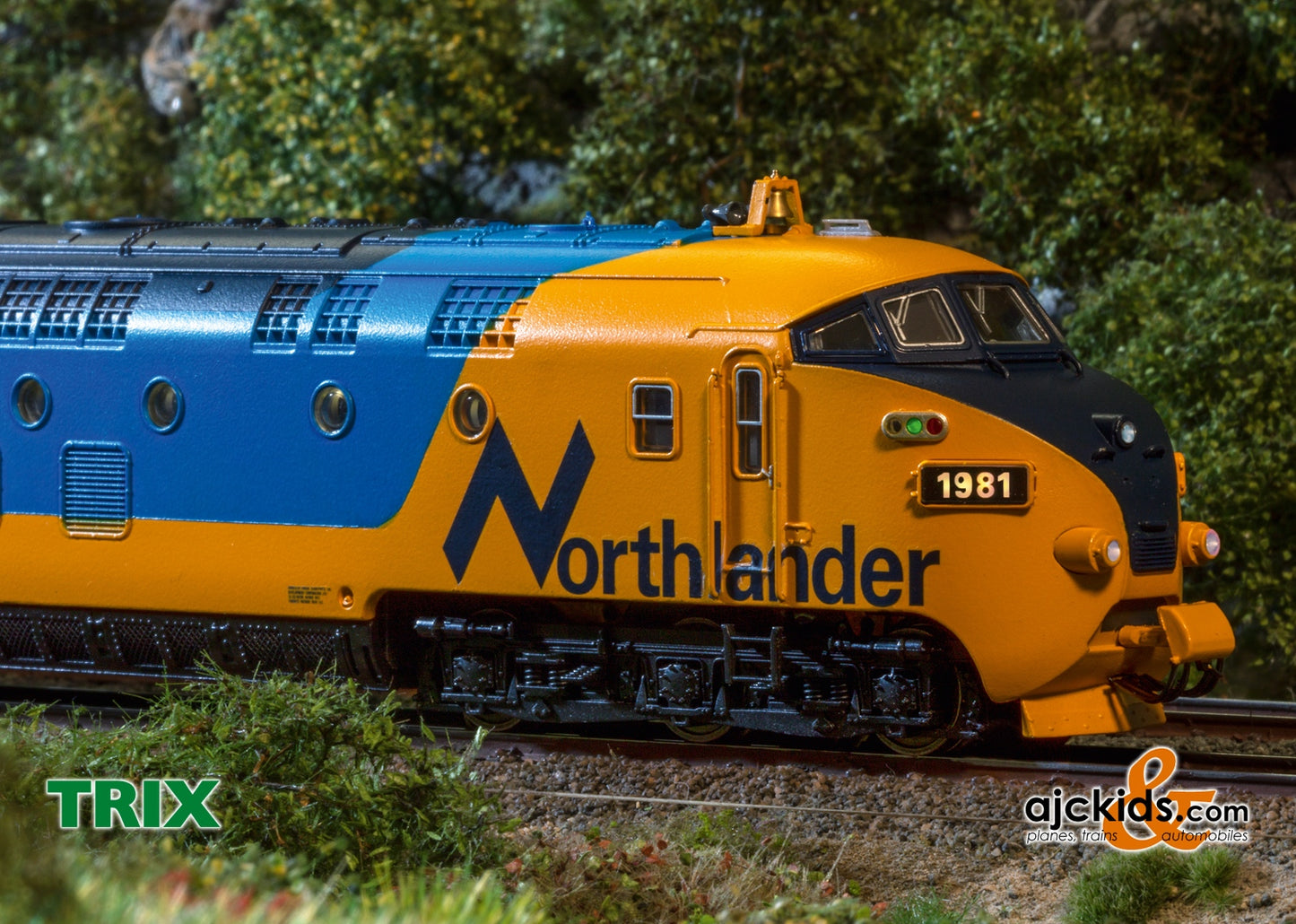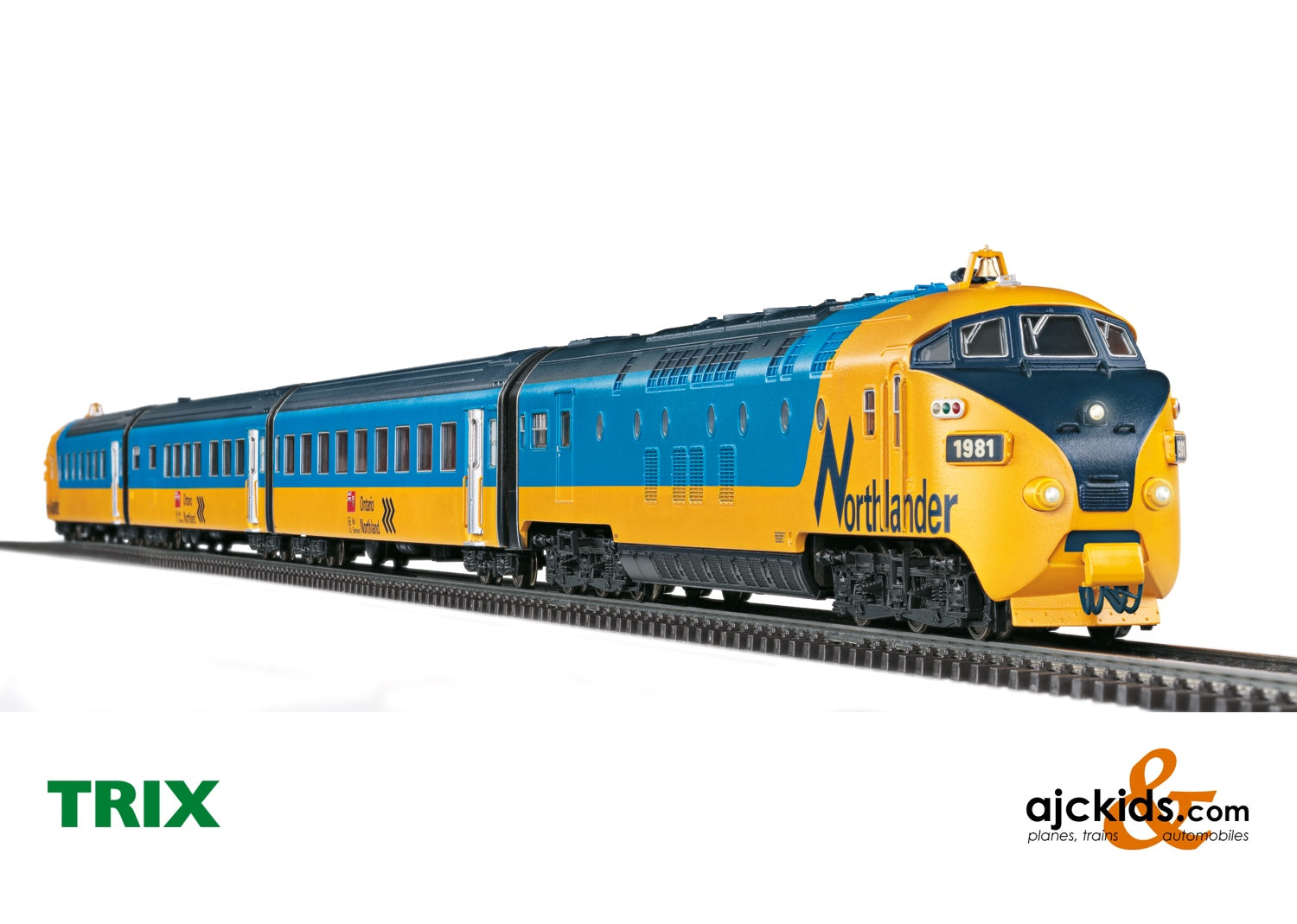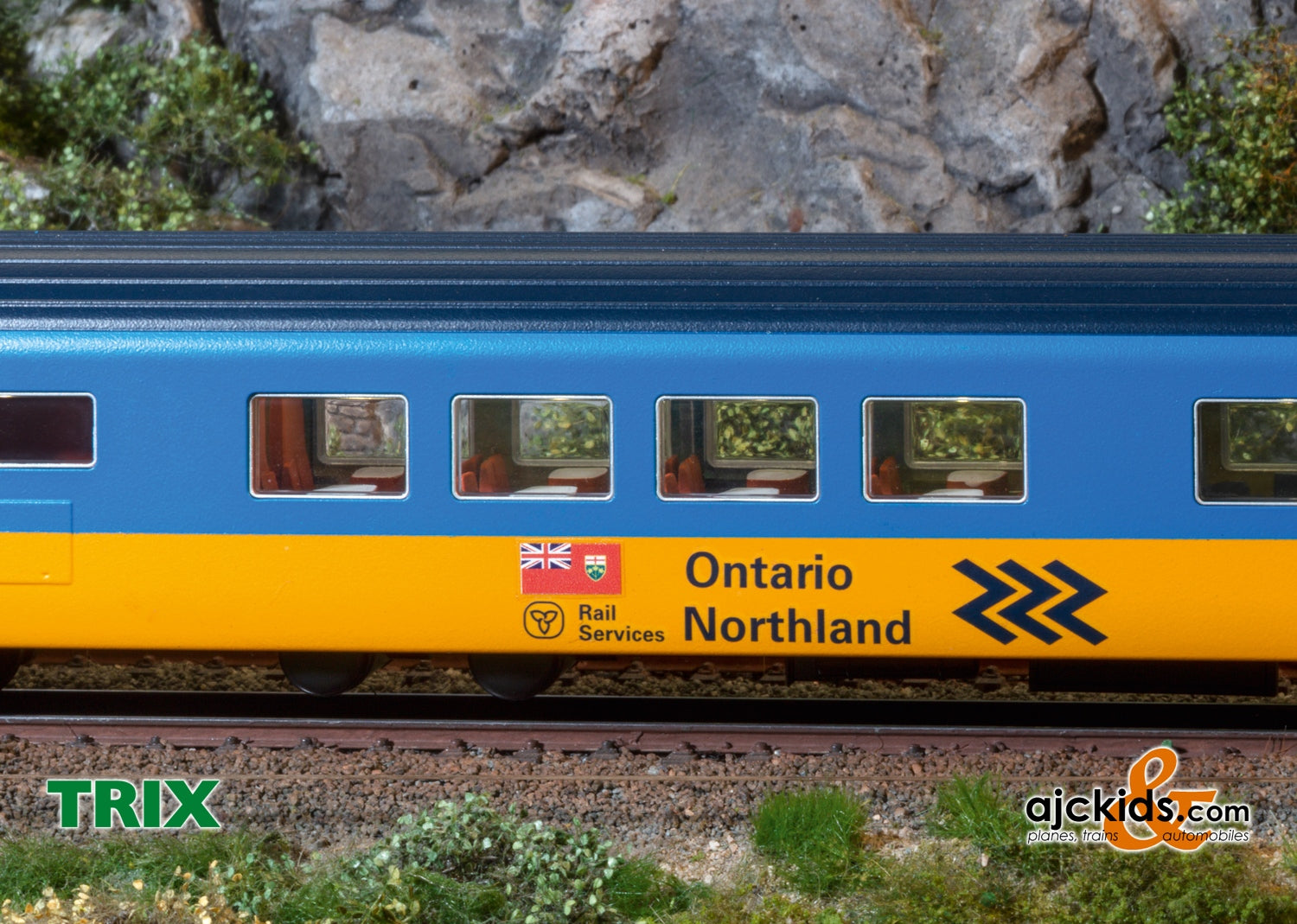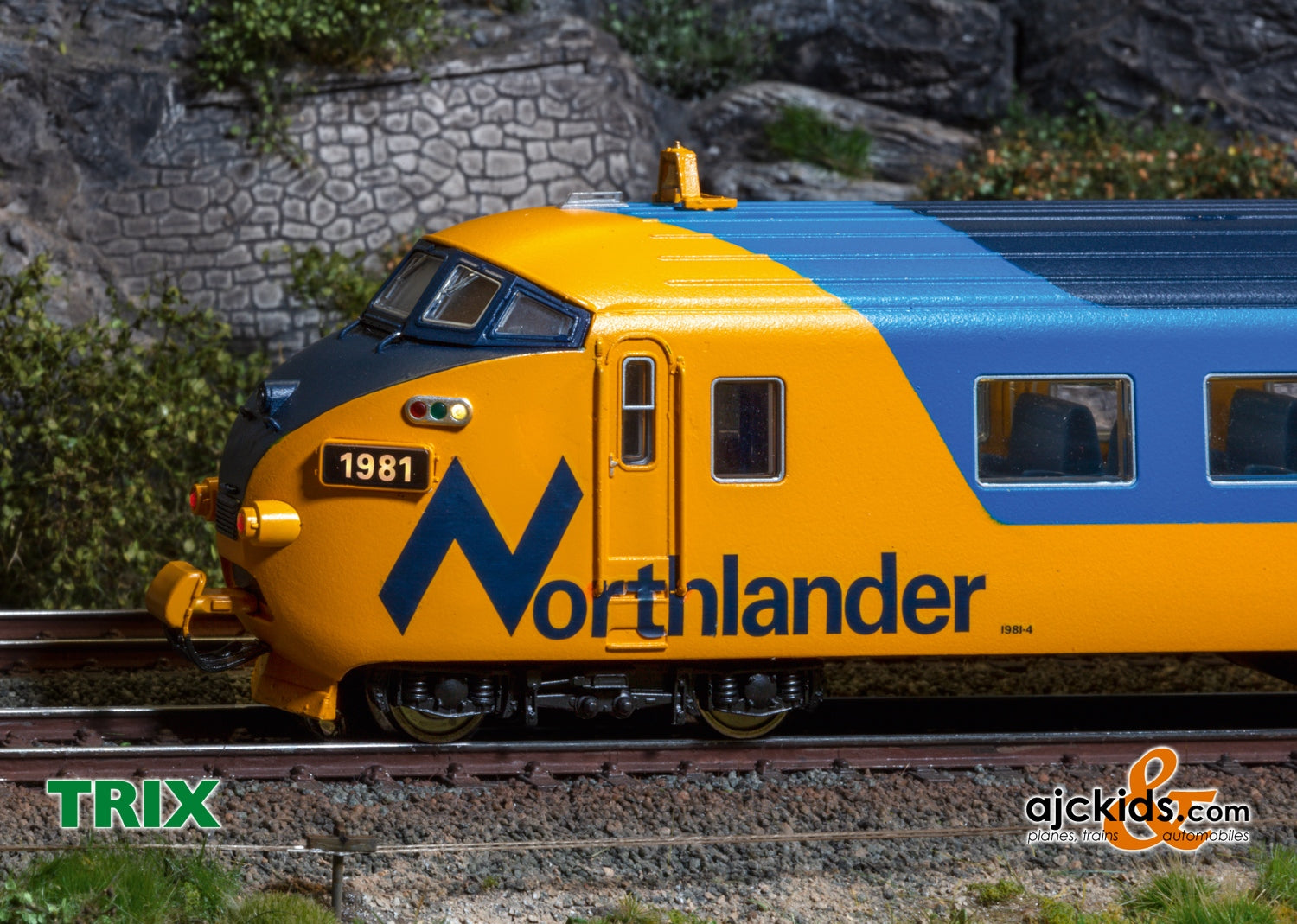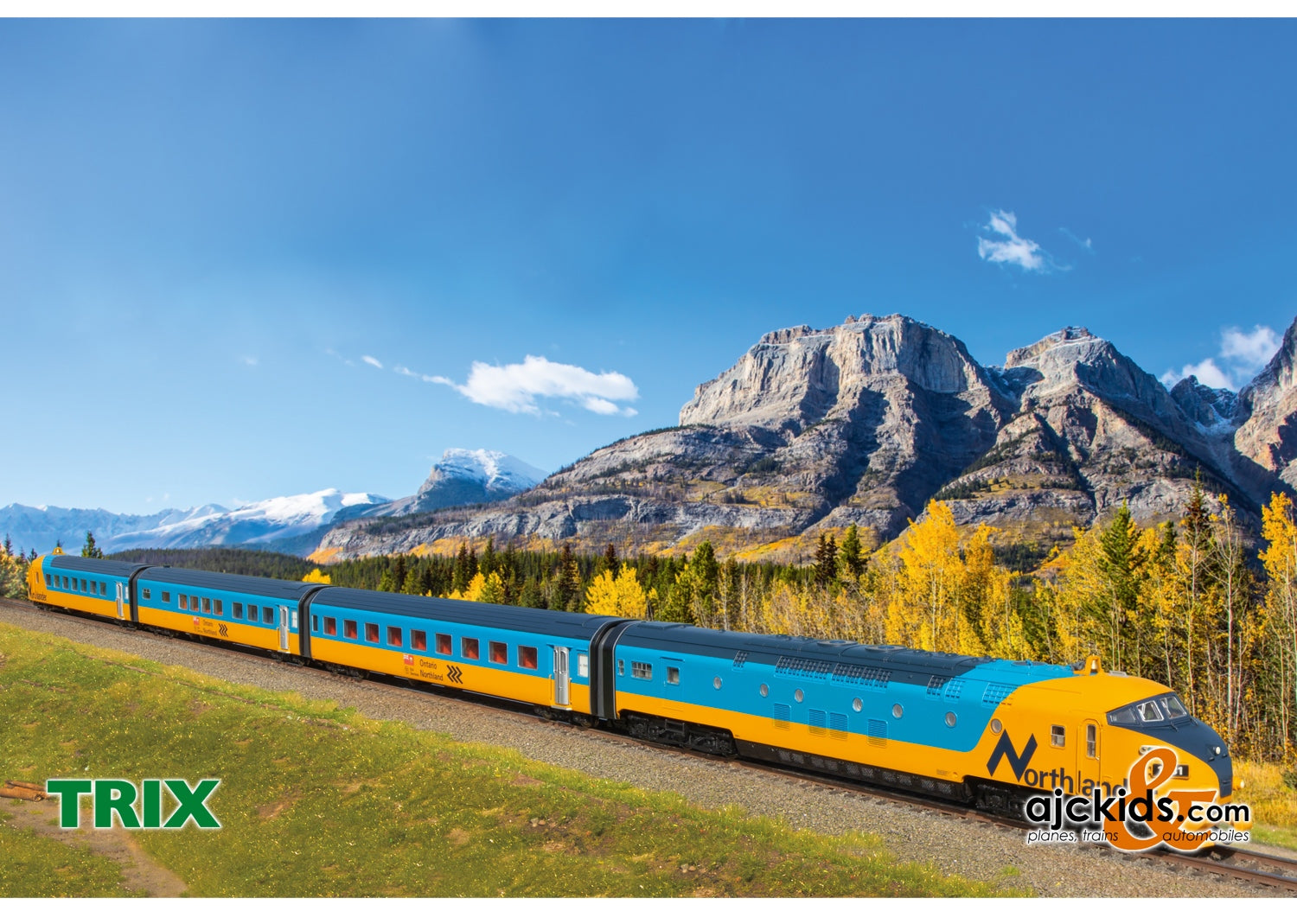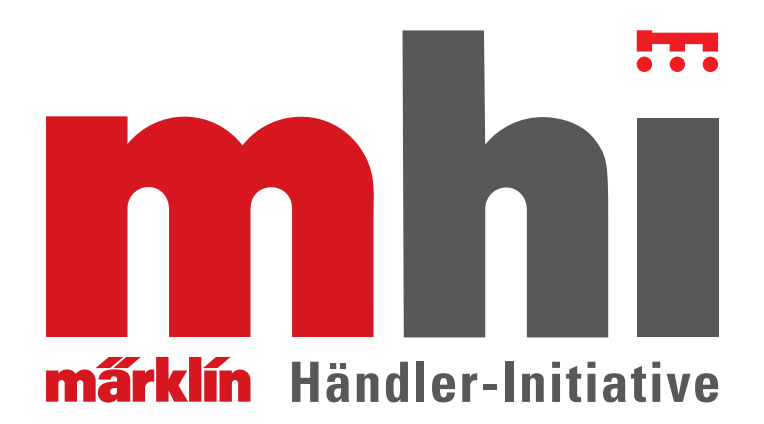Trix 22975 - Northlander Diesel Powered Train (Insider)
Prototype: “Northlander” diesel multiple unit of the Ontario Northland Railway (ONR), Canada (former RAm TEE diesel multiple unit). 4-piece set in sky blue/yellow basic color. 1 motor car, 1 compartment car, 1 dining car, 1 open-plan car with control compartment. Diesel multiple unit number 1981. Operating condition in the 1980s.
Highlights
- Prototypical shape variant based on the new design of the RAm TEE.
- Heavy metal design.
- RailCom-capable DCC/mfx digital decoder with extensive sound and light functions.
- Interior lighting installed as standard, can be controlled digitally.
- Engine room and driver’s cab lighting comes as standard and can be controlled digitally.
- Different classification lights at the ends of the trainset can be controlled digitally.
- Regulated high-performance drive with flywheel in the towing vehicle, 4 axles powered.
Product description
Model: 4-piece unit. With digital decoder and extensive sound and light functions. Regulated high-performance drive with flywheel in the motor vehicle, installed centrally. 2 of 3 driving wheel sets in each of the two 3-axle bogies are driven via cardan. Traction tires. Interior lighting installed as standard in the compartment, dining and open-plan car. Triple headlights and 2 red marker lights that change depending on the direction of travel, as well as interior lighting, work in conventional operation and can be controlled digitally. Interior lighting in the luggage compartment of the towing vehicle can be controlled separately digitally. Engine room lighting in the motor vehicle and driver's cab lighting in the motor vehicle and in the control compartment of the open-plan vehicle can each be controlled separately digitally. Classification lights at the ends of the trainset can be controlled digitally. Lighting with maintenance-free warm white and different colored light-emitting diodes (LED). Slide-guided multi-pole current-carrying special coupling between the multiple unit units for a continuous electrical connection of the entire train. Grinder switching with direction-dependent power supply via the front motor vehicle or large-capacity vehicle with control compartment. Lots of added details. Replica of the Scharfenberg coupling at both ends (without function). Minimum passable radius 437.5 mm. Driving on radius 1 is also possible without observing the clearance profile. Total length of the trainset over the coupling approx. 113 cm.
The “Northlander” diesel multiple unit will be manufactured in 2024 in a one-off series only for Trix Club members.
Charlie's Tip
You can find this model in an AC version in the Märklin H0 range under item number 39705 exclusively for Insider members.
Publications
- New product brochure H0 2024 - Poster brochure Club model 2024<Large company
Once Upon a time! This is how most fairy tales begin and there is actually a train that became famous in Europe and Canada and whose story is like a fairy tale. It begins in 1957, when the Trans Europ Express (TEE) took rail travel in Europe to a new level. The Dutch state railway NS, which originated the TEE initiative, teamed up with the Swiss SBB to develop the vehicle. Together they procured five four-car multiple units with an engine output of 2000 hp, which were a match for the DB icon VT 11.5 in terms of comfort and design. The active career of the sets known as RAm and DE4 began extremely promisingly, including with the TEE “Edelweiss” on the Zurich – Basel – Strasbourg – Luxembourg – Brussels – Amsterdam route, whose journey time was an almost sensational achievement for the time. This TEE only needed 9 hours and 30 minutes to cover the 1050 kilometers with 13 stops, which meant an average speed of 110 km/h. The “Edelweiss” was the RAm/DE4’s last performance in 1974, after the RAm 501 had been destroyed three years earlier as the TEE “Bavaria” in the terrible accident at Aitrang. Unexpectedly, a prince came from distant Canada and kissed the remaining RAm and DE4 awake. In distant Ontario, the state-owned Ontario Northland Railway ONR wanted to usher in a new era in passenger transport. On June 9, 1977, the former European TEE finally set off from Toronto's Union Station for the first time as the "Northlander" for the approximately 750 km long Nordland journey to Timmins. The trains had previously been completely overhauled in Holland and Switzerland. This involved the installation of new headlights, marker lights, number boxes, signal horns and bells according to Canadian standards. The vehicles also received the elegant ONR yellow/blue color scheme in their old homeland. The “TEE Trains” quickly became a great success, especially since the “Northlander” drove through a fairytale landscape. The travel time of around 11 hours was absolutely acceptable by Canadian standards, and the focus was on the unusually comfortable travel experience. However, after numerous failures, the sensitive motor vehicles were replaced in the early 1980s by tried and tested GM locomotives of the FP7 type. The “Northlander” ran in this configuration until 1992. Once again the fairy tale seemed to end in a cemetery for discarded rail vehicles. Then the Swiss association TEE-Classics brought five cars back to Europe. Incidentally, with significant help from the Märklin company, who were able to present the famous train soon after it arrived in Göppingen. V 200 007 took over the transport from the port of Hamburg to Swabia. This means that the little “Northlander” is also an eye-catcher in German miniature landscapes. Especially since there is no TEE train that could become a two-time television star.Eisenbahn-Romantik dedicated two episodes to these trains: “From the TEE to the Northlander” describes the missions in Europe and especially in Canada with unique historical scenes, “Once Ontario - Northland and back” describes the adventurous return operation from North Bay in Ontario to the Arrival in the port of Hamburg. Both episodes are available in the ARD media library or on YouTube. And what about the happy ending that every fairy tale should have? This exists in several ways: The five former “Northlander” wagons are now at the Nederlands Transport Museum (www.nederlandstransportmuseum.nl), where refurbishment has begun. The large “Northlander”, which was discontinued in 2012, is scheduled to return to its old route with modern Siemens multiple units from 2025 or 2026 and the legendary European-Canadian train will be reminiscent of a very extraordinary train with the perfect club model, at least on a small scale.
characteristics
Warning notice
| DCC | SX2 | SX | MFX | |
|---|---|---|---|---|
| Front signal | X | X | ||
| Interior lighting | X | X | ||
| Diesel locomotive driving noise | X | X | ||
| Horn high | X | X | ||
| Direct control | X | X | ||
| Brake squealing | X | X | ||
| Cab lighting | X | X | ||
| Horn low | X | X | ||
| Cab lighting | X | X | ||
| Operating noise 1 | X | X | ||
| Fan | X | X | ||
| Bell jar | X | X | ||
| Number plate lighting | X | X | ||
| Light function 1 | X | X | ||
| Light function 2 | X | X | ||
| Refill diesel | X | X | ||
| Sanden | X | X | ||
| Conductor whistle | X | X | ||
| Close the door | X | X | ||
| Light function 3 | X | X | ||
| Air compressor | X | X | ||
| Release compressed air | X | X | ||
| Horn high | X | X | ||
| Horn low | X | X | ||
| Generator noise | X | X | ||
| Rail joint | X | X | ||
| shunting aisle | X | X | ||
| Train announcement | X | X |
This model can be found in an AC version in the Märklin H0 assortment at Ajckids.com under item number 39705 exclusively for Insider members.
EAN/UPC: 4028106229756
